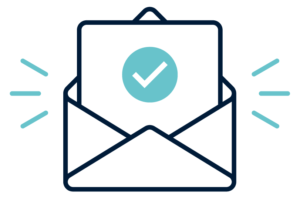Published 6 April 2020
On 30 March 2020, the Prime Minister announced that the Government would introduce ‘a $1,500 per fortnight JobKeeper payment to keep Australians in their jobs’. An urgent announcement made which was intended to prevent job losses.
However, this scheme will depend upon legislation being enacted. We understand that parliament will return on Wednesday 8 April 2020 to enact these (and other) important stimulus packages in the face of the Covid-19 outbreak.
Under the JobKeeper payment, businesses impacted by the coronavirus will be able to claim payment of $1,500 per fortnight (before tax) per eligible employee.
What we understand from the government’s announcement, however, is that:
The purpose of the JobKeeper Payment is:
- to help employers to cover the costs of their employee’s wages, so that they can retain their job and continue to earn an income; and
- to keep employer and employees connected so that businesses will be able to reactivate their operations immediately after the crisis without having to re-hire staff.
In practice, this means that eligible employers will keep paying eligible employees during a period of 6 months maximum, from 30 March 2020 and will be reimbursed monthly in arrears by the Australian Taxation Office (ATO).
Eligible employers
Employers (including non-for profit and some self-employed individuals) will be eligible for the subsidy if:
- their business has a turnover of less than $1 billion, and their turnover has fallen by more than 30 per cent; or
- their business has a turnover of $1 billion or more, and their turnover has fallen by more than 50 per cent; and
- the business is not subject to the Major Bank Levy.
Establishing that a business has faced either 30% or 50% fall in their turnover
Depending on the natural activity statement reporting period of their business, employers will have to establish that their turnover has fallen in the relevant month or three months relative to their turnover a year earlier.
The Tax Commissioner will have discretion:
- to consider additional information that the business can provide to establish that they have been significantly affected by the impacts of the coronavirus if:
- a business was not in operation a year earlier (e.g. the business was newly established); or
- the turnover was not representative of the business’ usual or average turnover (e.g. there was a large interim acquisition or the business’ turnover is typically highly variable).
- to set out alternative tests that would establish eligibility in specific circumstances (e.g. eligibility may be established as soon as a business has ceased or significantly curtailed its operations).
Obligations on Employers
To receive the JobKeeper Payment, employers must:
- register their interest in applying for the JobKeeper Payment on the Australian Taxation Office (ATO) website via gov.au/job-keeper-payment/;
- provide supporting information demonstrating a downturn of at least 30% or 50% in their business or that they expect to suffer a 30% or 50% decline in turnover relative to a comparable period a year ago (of at least a month) due to the coronavirus pandemic;
- provide information to the ATO on eligible employees:
- this includes information on the number of eligible employees engaged as at 1 March 2020 and those currently employed by the business (including those stood down or re-hired); and
- when available, the ATO will use Single Touch Payroll data to pre-populate the employee details for the business.
- guarantee that each eligible employee receives at least $1,500 per fortnight (before tax);
- notify all eligible employees that the employer is receiving the JobKeeper Payment in relation to them;
- provide information to the ATO on a monthly basis, including information on the number of eligible employees.
Eligible Employees
Eligible employees are employees who:
- are currently employed by an eligible employer (including those stood down or re-hired);
- were employed by the employer at 1 March 2020;
- are full-time, part-time, or long-term casuals (eligible casual employees are those who have been hired on a regular basis for at least 12 months as at 1 March 2020);
- are at least 16 years of age;
- are an Australian citizen, the holder of a permanent visa, or a Special Category (Subclass 444) Visa Holder; and
- are not in receipt of a JobKeeper Payment from another employer.
Employees that will receive the JobKeeper Payment will need to advise Services Australia of this income and will no longer be eligible for the JobSeeker Payment and the Coronavirus Supplement.
Employees who have multiple employers will have to notify their primary employer that they want them to claim the JobKeeper on their behalf.
Payment Process
Eligible employers will pay a flat rate subsidy of $1,500 per fortnight before tax to eligible employees as follows:
- For employees that were already receiving this amount from their employer, they will continue to receive their regular income according to their prevailing workplace arrangements;
- For employees that have been receiving less than this amount, the employer will have to pay employees a minimum of $1,500 per fortnight, before tax.
- For employees earning more than this amount, the employer will need to be able to provide them with a top-up, so that they will continue to receive their regular income according to their prevailing workplace arrangements.
- For employees that have been stood down before this scheme, the employer will pay employees a minimum of $1,500 per fortnight, before tax.
- For employees that had been employed on 1 March 2020, whose employment was subsequently ceased, and who have been re-hired by the same eligible employer, those employees will receive a minimum of $1,500 per fortnight, before tax.
On the current guidance, employers are not required to pay superannuation on additional wages paid because of the JobKeeper Payment.
The subsidy will start on 30 March 2020, with the first payments from the ATO expected to be received by employers in the first week of May.
Cautions
However, employers should take those statements with a level of precaution as the Government has announced its intention to pass legislation to introduce this new measure. The ATO website outlines that ‘If legislation is enacted, support will be directed to employers to pass on to employees.’
We also have some preliminary concerns about the eligibility requirements. What has been announced to date by the government in relation to how eligibility will be established by employers lacks some degree of certainty, and we anticipate this will be refined to a legislative standard. This may result in some employers not being eligible, in spite of the presumption that they are. This means that some caution is necessary before making agreements with any employees that depend upon receipt of the scheme, prior to seeing the legislation and receiving advice. This is in spite of Prime Minister Scott Morrison’s assertions late last week that employers could ‘take this to the bank’.
Parliament is expecting to return on Wednesday 8 April 2020 to pass measures including JobKeeper Payment scheme. We hope to provide a more formal update at this time.
Useful Factsheets:
- Supporting businesses to retain jobs
- JobKeeper payment – Information for employers
- JobKeeper payment – Information for employees
If you are unsure how the coronavirus’ measures will impact your business, please contact our office on 02 8436 2500.
This content is general in nature and provides a summary of the issues covered. It is not intended to be, nor should it be relied upon, as legal or professional advice for specific employment situations. Olexo Workplace Law recommends that specialist legal advice should be sought about specific legal issues.



